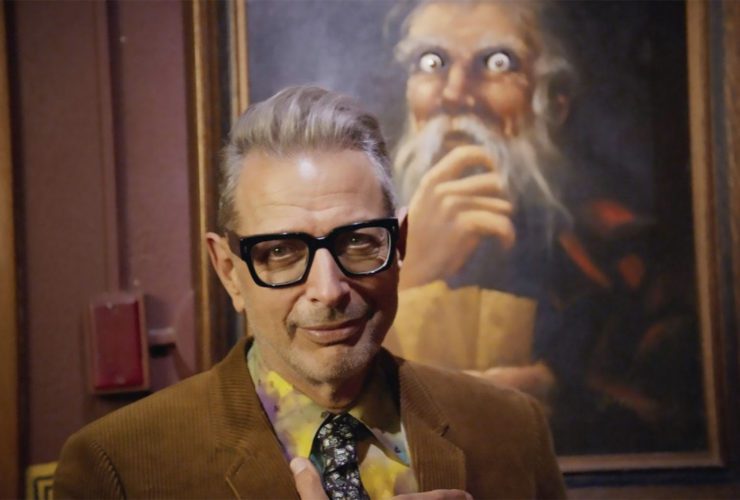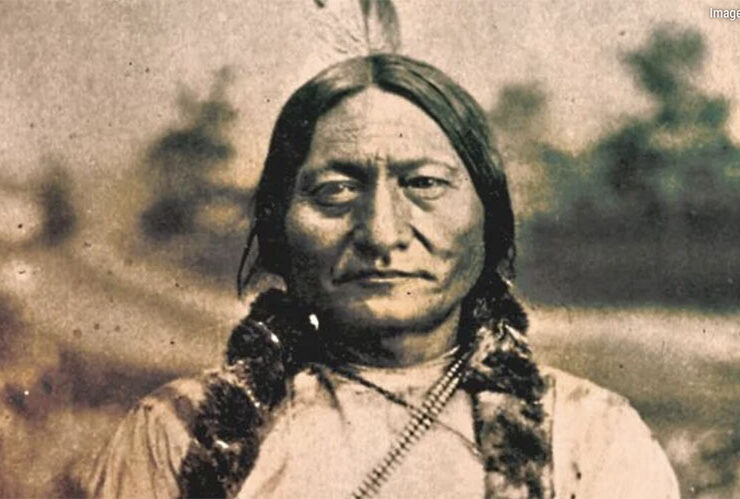What is the meaning (purpose) of life?
By Tom Baranski
Life is the aspect of existence that processes, acts, reacts, evaluates, and evolves through growth (reproduction and metabolism). The crucial difference between life and non-life (or non-living things) is that life uses energy for physical and conscious development. Life is anything that grows and eventually dies, i.e., ceases to proliferate and be cognizant. Can we say that viruses, for example, are cognizant? Yes, insofar as they react to stimuli; but they are alive essentially because they reproduce and grow. Computers are non-living because even though they can cognize, they do not develop biologically (grow), and cannot produce offspring. It is not cognition that determines life, then: it is rather proliferation and maturation towards a state of death; and death occurs only to living substances.
Or is the question, ‘What is the meaning (purpose) of life?’ That’s a real tough one. But I think that the meaning of life is the ideals we impose upon it, what we demand of it. I’ve come to reaffirm my Boy Scout motto, give or take a few words, that the meaning of life is to: Do good, Be Good, but also to Receive Good. The foggy term in this advice, of course, is ‘good’; but I leave that to the intuitive powers that we all share.
There are, of course, many intuitively clear examples of Doing Good: by retrieving a crying baby from a dumpster; by trying to rescue someone who’s drowning. Most of us would avoid murder, and most of us would refrain from other acts we find intuitively wrong. So our natural intuitions determine the meaning of life for us; and it seems for other species as well, for those intuitions resonate through much of life and give it its purpose.
What is Life?
by Nicholas Taylor
The ceramic artist Edmund de Waal places an object in front of him and begins to tell a story. Even if the patina, chips and signs of repair of the inanimate object hint at its history, the story is told by a living observer. A living thing is an object that contains its story within itself. Life’s story is held in the genome, based on DNA. Maybe other ways for memorizing the story may be discovered, but in environments subject to common chemical processes, common methods are likely to emerge.
Although we have only the example of the Earth, it shows that life will evolve to fill every usable niche, and to secure and further diversify those niches. This should not be thought of as purposeful. Life embodies a ‘plan,’ but one that does not specify ends, only methods acquired iteratively. Inanimate processes can be cyclic but not iterative: they do not learn from past mistakes.
Life exists at many levels. Life is also a process through which energy and materials are transformed; but so is non-life. The difference is that the process of life is intimately linked to the story it contains, whereas non-life is indifferent to the story we impose upon it. Yet life is only a story, so it can act only through matter. Therefore life is by nature a toolmaker. Its tools are potentially everything that exists, and its workshop is potentially the whole universe. So why do humans risk undermining the life of which they are part? Because they try to impose upon it a story of their own making. Yet humans, the ‘tool-making animals’, are themselves tools of life, in an unplanned experiment.
What is Life?
by Dr. Harry Fuchs
First the technical definition. Life is self-organizing chemistry which reproduces itself and passes on its evolved characteristics, encoded in DNA. In thermodynamics terms, it has the ability to reduce local entropy or disorganization, thus locally contravening the third law of thermodynamics.
But what is life really about, if anything? The two possibilities are, life is either a meaningless accident arising from the laws of physics operating in a meaningless universe, or it is a step in a planned ‘experiment’. I say ‘step,’ because this cannot be the end. The current state of life is as yet too unstable and undeveloped for it to be the end. And I say ‘experiment’ because the evolutionary nature of life suggests that its future is not known. If therefore the universe itself has a purpose, it seems most likely to be to explore what the outcome of the evolutionary experiment would be.
But what will be the outcome? If, as many physicists now believe, the universe is only information, then harnessing all the resources of the universe in one giant evolutionary process could plausibly provide a useful outcome for a species clever enough to create the universe in the first place. On this interpretation, life will ultimately organize all the physical resources of the universe into a single self-conscious intelligence, which in turn will then be able to interact with its creator(s).
What is Life?
by Dr. Steve Brewer
Life is the embodiment of selfishness! Life is selfish because it is for itself in two ways: it is for its own survival, and it is for its own reproduction. This desire is embodied in an adaptive autocatalytic chemical system, forming life’s embodied mind.
Anything that is not itself is the other; and the collection of others constitutes its environment. The organism must destructively use the other to satisfy its reproductive desire, but on achieving this, it produces an additional other – but now one that also embodies its own selfish aim and the means to satisfy this aim. Therefore, even by an organism satisfying its desire, it makes the continuing satisfaction of its desires ever more difficult to achieve. A partial solution to this dilemma is for genetically-related entities to form a cooperating society.
The underlying mechanism of evolution is therefore the iteration of the embodied desire within an ever more complex competitive and social environment. Over vast numbers of iterations, this process forces some life-forms along a pathway that solves the desire for survival and reproduction by developing ever more complex and adaptable minds.
This is achieved by supplementing their underlying cellular embodied chemistry with a specialist organ (although still based on chemistry) that we call its brain, able to rapidly process electrical signals. Advanced minds can collect and process vast inputs of data by ‘projecting’ the derived output back onto its environmental source, that is by acting. However advanced it might be, an organism is still driven by the same basic needs for survival and reproduction. The creative process, however, leads the organism towards an increasingly aesthetic experience of the world. This is why for us the world we experience is both rich and beautiful.
What is Life?
by Courtney Walsh
Life is the eternal and unbroken flow of infinite rippling simultaneous events that by a fortuitous chain has led to this universe of elements we are all suspended in, which has somehow led to this present experience of sentient existence. Animal life (excluding that of humans) shows that life is a simple matter of being, by means of a modest routine of eating, sleeping, and reproducing. Animals balance their days between these necessities, doing only what their bodies ask of them. The life of vegetation is not far from that of animals. They eat and sleep and reproduce in their own way, for the same result. So life is a beautiful and naturally harmonious borrowing of energy.
Yet we have taken it for granted. We have lost the power to simply be happy eating, sleeping, reproducing, believing we need a reason to be alive, a purpose and a goal to reach so that on our deathbeds (something we have been made to fear) we can look back and tell ourselves we have done something with our lives. Life has lost its purpose because we have tried to give it one. The truth is that we are no more significant than the sand by the sea or the clouds in the sky. No more significant. But as significant.
No matter what your race, religion, or gender, when you first step outside your door in the morning and feel the fresh air in your lungs and the morning sun on your face, you close your eyes and smile. At that moment you are feeling life as it should be. No defining, no understanding, no thinking. Just that feeling of pure bliss. For that is what life is.
What is Life
by C Cheryl Anderson
Of all Webster’s definitions of ‘life’, the one for me that best covers it is, “The sequence of physical and mental experiences that make up the existence of an individual.” Indeed, life is a continuum of accomplishment, failure, discovery, dilemma, challenge, boredom, sadness, disappointment, appreciation, the giving and receipt of grace, empathy, peace, and our reactions to all sorts of stimuli – touch, love, friendship, loss… One can either merely exist or try to achieve, working through the difficult times, perhaps learning a thing or two.
Everyone has a story. I’ve been surprised when learning something new about an acquaintance or friend that must have been very difficult to manage or survive, but there they are in front of me. It’s how you come out on the other side of those challenging times that are important. How you land, get on with it, and keep on truck.in.’
Life cannot be planned: there’s fate, and there’s simply bad luck. Failure can bring crushing disappointment, or you can try and make a new plan. A person can waste an inordinate amount of time mourning what they don’t have, or plans that don’t work out. But who wants to waste that much time regretting?
Life has happy surprises, small moments to cherish. It’s a matter of weighing the good and bad times – the challenge is to balance both, ending up with a life looked back on that was worth the mighty effort. I’m not meaning to sound like a Pollyanna – I assure you I’m not – it’s just more pleasant to strive for a modicum of equilibrium. If I can manage that, I’m good.
What is Life?
by Devon Hall
“Life’s but a walking shadow, a poor player,
That struts and frets his hour upon the stage
And then is heard no more. It is a tale
Told by an idiot, full of sound and fury,
Signifying nothing.”
(Macbeth, Act V, Scene V)
These words of Shakespeare’s Macbeth summarize interesting ideas about the nature of life. The first line expresses two of the three marks of existence as per Buddhist thinking, Anicca, impermanence, and Anatta, non-self: a “walking shadow” is as insubstantial and impermanent as anything imaginable; a “poor player” neither creates nor directs his role, and the character being played only exists because of an author. Macbeth’s entire statement, particularly the last sentence, expresses the third Buddhist mark of existence: Dukkha, dissatisfaction.
The stage metaphor in the second line represents boundaries or limits. Scientific research into the nature of life often focuses on the material, energetic, and temporal limitations within which life can exist. The temporal limit of life is known as death. In the spirit of this interpretation, the idea of being “heard no more” could imply that life constantly evolves new forms while discarding older ones.
Macbeth hints at the wisdom of mystery traditions while anticipating the revelations of genetic science by stating that life “is a tale.” Now, this refers to the language-based, or code-based, nature of life. Readers may consider this in relation to DNA and RNA, and also in relation to John’s Gospel: “In the beginning was the Word, and the Word was with God, and the Word was God.” (The implications of the phrase “told by an idiot” exceed the scope of this inquiry.)
In five concise and poetic lines, Shakespeare defined life as an impermanent, non-self-directed, unsatisfactory, limited, ever-changing, and ultimately insignificant code.
What is Life?
by Greg Chatterton
Life is the realization of its own contingency. But that’s not the end of it; it’s merely the means towards the creation of meaning. Life is thus a constant process of becoming, through creating values and meaning. Life is therefore perpetual transcendence, always moving into the future, creating the present. Life is also acceptance: the acceptance of finitude; acceptance of one’s responsibilities; acceptance of other human beings’ existence and choices. Life is neither fixed nor absolute, it is ambiguous; life is the possibilities entailed by existence. Life is the consciousness of humanity; it is the perception of the world and the universe.
So life is sadness; life is death. Life is suffering and destruction. But life is also happiness; life is living. Life is joy and creativity. Life is finding a cause to survive, a reason not to die – not yet. It is youth and old age, with everything in between. Overall, life is beautiful – ugliness is fleeting. Corpses and skeletons are lugubrious; living flesh is resplendent, all bodies are statuesque. Human life is love and hate, but it can only be life when we are with others. Life as fear and hatred is not real life at all. For some, life is God. We would all then be His children. We are nevertheless the spawn of the Earth.
Human existence is freedom – an edifice of plurality.
What is Life?
by Kristine Kerr
If the ancients could do philosophy in the marketplace, maybe I can too. So I employed some modern technology by texting the question ‘What is Life?’ to all my contacts. I didn’t explain the context of the question, to avoid lyrical waxing. Here are a sample of replies.
Life is: being conscious of yourself and others; a being with a soul; experience; what you make it; your chance to be a success; family; living as long as you can; not being dead; greater than the sum of its parts; complex chemical organization; different things to different people; a mystery; a journey; don’t know; a quote from a song, “baby don’t hurt me;” life begins after death. I asked a regular in my favorite café. They said, “Man’s chief end is to glorify God and enjoy him forever.” A person suffering from a degenerative disease answered: “life is sh** then you die.” Another with the same illness interviewed in our local newspaper said, “My life is a mission to help other sufferers.” A colleague said, “some would want to shoot themselves if they had my life, but I’m happy.” I posed the question at my art club and we did no painting that day…
I was surprised to find that I had no immediate definition of life myself (hence the idea to ask) and that there is no consensus (only one reply was repeated), but then, that also is life.
I sometimes catch myself considering life when I arrive at the turning point on my evening walk. It’s a dark spot which makes stargazing easier, and the heavens are a good place to start since life as we know it began there (the heavier atoms like carbon which make up our bodies initially formed in dying Red Giant stars). This makes me feel two things about my life: it’s a dot because the cosmos is immense, but it’s an important dot in the cosmos because I can consider it.




